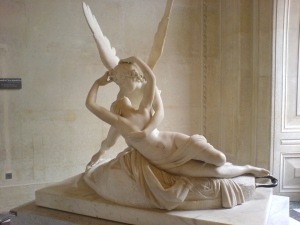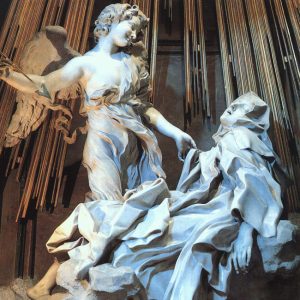cupid and psyche, 1793

Antonio Canova was an Italian sculptor, who was originally from the Veneto region of Italy, but like most other artists of the time, mid to late 18th century, he went to study art in Rome. Rome was a capital of art and culture, especially when looking at the classics and antiquity, as Canova did. The sculptor had a penchant towards neo-classic ideals, like his contemporaries, the French Jacques Louis David and Scottish Robert Adam.
death of marat, 1793, David


kedleston hall, robert adam

ecstasy of saint teresa, bernini"

Neo- Classicism, involves a grand sense of harmony, and natural beauty, contradicting the theatrics of the Baroque period, epitomized by Gian Lorenzo Bernini. This era, was a return to the refined, and balanced, indulging in the realities of the flesh and measures up to the demands of the “father of art history,” Winckleman. Winckleman was a German art critic and historian, who was exploring the importance of learning through aesthetics and art. This movement in art, was looking back to the ancient Greek and Roman artistic moments, replicating the symmetrical elements of architecture, as Adam did, and the content, as seen in David.
three graces, canova

Canova’s execution of sculpting, the textures and ideals portrayed, mimic the smooth surfaces of ancient Greek and Roman sculptures. His themes and story content, are also borrowed from antiquity, as there is a continued interest in the Golden Age and their culture. Ancient myths and tales were used to teach and instruct.
napoleon, canova

Canova’s sculpture captures a moment in the story of the beautiful Psyche and Cupid, Aphrodite’s son, the god of Love, and his doomed love for the mortal. The sculpture demonstrates a timeless love, rounded with impossible ideals, and god- like perfection, echoing art of antiquity. Canova’s skill and style is evident in every detail, from the drapery to the intricate facial details. Later, what I call the Impressionist sculpture Auguste Rodin, looks to the form of Canova and other neo- classic artists, and morphs it into his own, while remembering the past and where art has come from. Canova’s style speaks to its viewers through its simple beauty and adherence to the aesthetic of harmony.
the kiss, 1866, rodin

Cupid & Psyche=my fave sculpture ever.
ReplyDeleteAlso, have you read Middlemarch? I wrote a paper about the protagonist, Dorothea, and compared her to St. Teresa, using both the Bernini sculpture and the diary entry where she describes the scene presented. It was, as Miley Cyrus would say, "pretty cool."